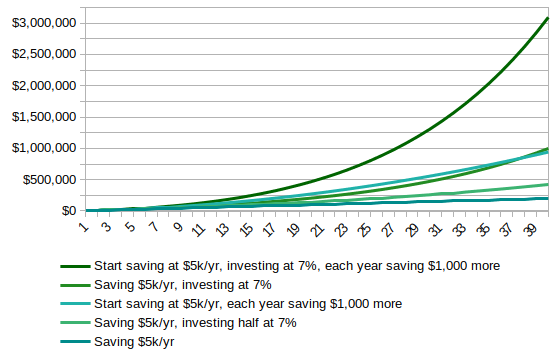Becoming a millionaire is a dream many people share, but turning that dream into reality requires careful planning, wise decisions, and disciplined investing. If you’re an aspiring millionaire looking to grow your wealth, it’s crucial to understand that successful investing involves more than just luck. In this article, we’ll explore essential investment tips that can help you on your journey to financial prosperity.
Essential Investment Tips for Aspiring Millionaires
Setting Financial Goals
Before embarking on any investment journey, you need to define your financial goals clearly. Are you seeking financial independence, planning for retirement, or aiming to fund a particular milestone? Understanding your objectives will steer your investment strategy in the right direction.

Understanding Your Objectives
Identify what you want to achieve financially. Whether it’s owning multiple properties, starting a business, or enjoying a comfortable retirement, having a clear vision is fundamental.
Determining a Timeframe
Your goals should be accompanied by a timeframe within which you intend to achieve them. Short-term goals might require different investment approaches than long-term ones.
Creating a Budget and Saving
No matter your income level, budgeting and saving are vital components of any successful financial plan.
Tracking Expenses
Monitor your spending habits and identify areas where you can cut unnecessary expenses. Small savings can add up significantly over time.
Building an Emergency Fund
Before diving into investments, ensure you have an emergency fund. It will serve as a safety net during unforeseen circumstances and prevent you from dipping into your investment capital.
Automating Savings
Automate your savings to make the process seamless. Set up automatic transfers to your investment accounts to stay consistent.
Diversification and Risk Management
Diversifying your investment portfolio and managing risk are essential to protect your wealth.
Understanding Diversification
Don’t put all your eggs in one basket. Diversification involves spreading your investments across various assets to minimize risk.
Evaluating Risk Tolerance
Assess your risk tolerance carefully. While higher-risk investments may offer greater returns, they can also lead to significant losses.
Balancing Investment Portfolio
Maintain a balanced portfolio by adjusting your investments based on market conditions and your financial goals.
Investing in Stocks
Stock market investments can yield substantial rewards when approached wisely.
Conducting Research
Thoroughly research potential companies before investing in their stocks. Look for strong financials, a competitive edge, and growth potential.
Identifying Promising Companies
Focus on companies with innovative products, sound leadership, and a track record of success.
Monitoring Performance
Stay updated on your investments’ performance and make necessary adjustments based on market trends.
Real Estate Investment
Investing in real estate can be a lucrative way to build wealth and generate passive income.
Benefits of Real Estate
Real estate offers advantages like appreciation, rental income, and tax benefits.
Location and Market Research
Choose properties in areas with potential for growth and high demand.
Property Management
If you own rental properties, efficient management is crucial for maintaining profitability.
Starting a Business
Entrepreneurship can be a powerful path to wealth creation.
Identifying a Lucrative Niche
Find a niche with high demand and a gap in the market.
Creating a Business Plan
Develop a comprehensive business plan that outlines your objectives, target audience, and financial projections.
Financial Management
Prudent financial management is key to a successful business venture.
Investing in Education and Self-Improvement
Continuously improving yourself can lead to valuable opportunities.
Continuous Learning
Stay updated on industry trends and best practices.
Acquiring New Skills
Invest in developing new skills that align with your goals.
Expanding Your Network
Networking can open doors to valuable connections and partnerships.
Seeking Professional Advice
Consider consulting financial experts to optimize your investment strategy.
Financial Advisors
Seek guidance from experienced financial advisors who understand your goals.
Tax Consultants
Tax planning can significantly impact your overall financial success.
Legal Experts
Consult legal experts to ensure your investments comply with regulations.
Staying Disciplined and Patient
Building wealth takes time and discipline. Stay patient and committed to your investment plan.
Conclusion
Becoming a millionaire through investments is an achievable goal with the right approach and mindset. Set clear financial objectives, diversify your portfolio, and make informed investment decisions. Remember to save diligently, stay disciplined, and seek professional advice when needed. With determination and proper planning, you can turn your aspirations into financial success.
FAQs
- Is becoming a millionaire solely about luck? No, becoming a millionaire requires strategic financial planning and disciplined investing.
- How can I minimize risk in my investment portfolio? Diversification is the key to reducing risk. Spread your investments across various assets.
- What is the best time to start investing? The best time to invest is now. The earlier you start, the more time your investments have to compound and grow.
- Can real estate investment be profitable even for beginners? Yes, real estate can be profitable, but research and careful decision-making are crucial.
- Why is continuous learning essential for success? Continuous learning keeps you updated on market trends and helps you adapt to changing circumstances.


